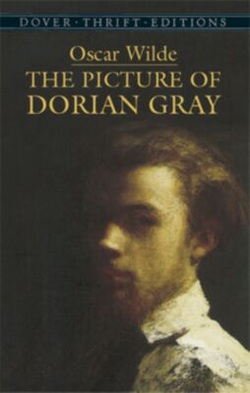
Author: Oscar Wilde
Genre: Philosophical Fiction
# pages: 336
Date published: 1890
5-star rating: 5 stars
Would you recommend it: Yes
A few years ago, my mom insisted I watch the 1945 film version of The Picture of Dorian Gray when it was on television one night. Since we usually have the same movie tastes, I agreed. While the movie was obviously dated, the story of young Dorian and his personal quest for the immortality of youth and beauty ensnared me. After it ended, my mom vowed that while the film was good, the novel was even better. This semester, I finally had the time to read the book slowly and to give it the attention it deserves.
The novel centers around a young man named Dorian Gray, a young orphan who has inherited his family’s sizeable wealth and estate. The novel opens with Basil Hallward painting Dorian’s portrait while Hallward’s friend, Lord Henry Wotton, observes. As he admires the portrait, Lord Henry tells Dorian that he possesses the two most important things—youth and beauty—but that these will eventually fade. This sparks Dorian to wish that he will never age, the desire that drives the horror to come.
Shortly after Basil finishes the portrait, Dorian begins to develop a strong and close friendship with Lord Henry, with whom he explores more worldly possibilities. One day Dorian stumbles upon a low-class theatre where he meets actress Sybil Vane, falling in love immediately and proposing to her. Dorian insists that Basil and Lord Henry see Sybil’s talents. Unfortunately, after she falls in love with Dorian, she gives up her acting, and now Dorian does not see her as the girl he fell in love with and tells her to never speak to him again. This tragic decision begins his downward spiral of sin. When he returns home from the theatre, he finds that the painting has developed a cruel smile that was not there before.
This book faintly reminded me of other horror and fantasy stories I have read, especially those in which the main character searches to trade humanity for immortality. Lord Henry’s anecdotes add some much-needed humor to the dark tale, and Oscar Wilde’s balance of horror, fantasy, sin, youth, and humor keeps the reader’s attention throughout.
In its unique way, The Picture of Dorian Gray explores the cost of youth and beauty. Although readers who enjoy classic literature would most enjoy this novel, the only full-length novel written by famed author Oscar Wilde, I would recommend it to anyone, particularly college students, for its unique perspective on the youth we value.
Review by Liz Handler, A&S '15

 RSS Feed
RSS Feed
